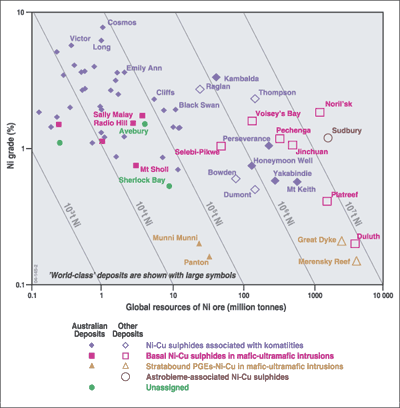X-sections
in response to
by
posted on
Nov 13, 2007 12:05PM

NI 43-101 Update (September 2012): 11.1 Mt @ 1.68% Ni, 0.87% Cu, 0.89 gpt Pt and 3.09 gpt Pd and 0.18 gpt Au (Proven & Probable Reserves) / 8.9 Mt @ 1.10% Ni, 1.14% Cu, 1.16 gpt Pt and 3.49 gpt Pd and 0.30 gpt Au (Inferred Resource)

PM,
Although I would like to be able to give you an easy "yes / no" answer, there are just too many parameters that ultimately determine what is considered "mineable ore". (grade, tonnage, depth, geometry of deposit, location, infrastructure, metalurgy, price....the list goes on)
That said the high grade discovered at DE so far makes it easier.
So far the sulphides discovered at DE are Ni and Cu bearing so "net textured" as defined by Noront would most likely be ore grade. Also they are carrying significant PGE's which obviously helps.
Mother Nature never likes making anything too simple so anything could be happening. All they can do is keep on doing more drilling and geophysics...the more they do the more they'll know. Seems like (IMO) there is some late faulting making the geology nice and complex. I mentioned that the deposit may be bifurcating but keep in mind that I'm dealing with incomplete data. Could be many reasons why it might be splitting ( Faults, dykes, intrusions.....) Either way it could rejoin itself or keep splitting....it could trend to lower grade or get even better...we'll have to wait for the assays
Rockaur
I've attached a graph of world class Ni deposits with their grade / tonnage relationships. Note the slanting lines represent Ni metal tonnage versus Ni ore... always nice to be high-grade
